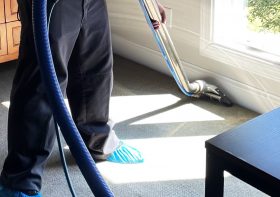How often should I get my teeth cleaned

Dental cleanings, also known as prophylaxis or scaling and polishing, involve the removal of plaque, tartar, and stains from the teeth. Despite regular brushing and flossing, some areas of the mouth are difficult to clean thoroughly, leading to the accumulation of plaque and calculus. Over time, this buildup can contribute to gum disease, tooth decay, and other oral health problems. Professional cleanings performed by dental hygienists or dentists help remove these deposits, reducing the risk of dental issues and promoting overall oral health.
The American Dental Association (ADA) recommends visiting the dentist at least once every six months for a routine examination and cleaning. This biannual schedule allows dentists to monitor oral health, detect any issues early, and provide preventive care. However, the frequency of dental cleanings may vary based on individual factors such as:
Oral Health Status: Individuals with a history of gum disease, tooth decay, or other dental problems may require more frequent cleanings to maintain oral health. Dentists may recommend quarterly or even monthly cleanings for those with significant oral health concerns.
Risk Factors: Certain factors increase the risk of dental diseases, necessitating more frequent cleanings. These risk factors include smoking, diabetes, weakened immune system, dry mouth, and genetic predisposition to dental issues. People with these risk factors may benefit from more frequent dental visits to prevent complications.
Previous Dental Treatments: Patients who have undergone dental treatments such as orthodontic therapy or restorative procedures may require more frequent cleanings to ensure the longevity of their dental work and prevent complications.
Age: Children and older adults may have specific dental needs that warrant more frequent cleanings. Children, especially those prone to cavities, may benefit from additional preventive measures such as fluoride treatments and dental sealants. Older adults may require more frequent cleanings due to age-related changes in oral health and increased susceptibility to dental problems.
Personal Oral Hygiene Habits: Individuals with excellent oral hygiene habits, including regular brushing, flossing, and mouthwash use, may require fewer cleanings compared to those with poor oral hygiene practices. However, even diligent oral care cannot remove all plaque and tartar buildup, making professional cleanings essential for maintaining oral health.
Presence of Dental Appliances: People wearing braces, dentures, or other dental appliances may need more frequent cleanings to prevent plaque accumulation around these devices and reduce the risk of gum inflammation and decay.
Professional Assessment: Ultimately, the frequency of dental cleanings should be determined by a dental professional based on individual oral health needs and risk factors. Dentists and hygienists evaluate each patient’s oral health status during routine examinations and recommend an appropriate cleaning schedule accordingly.
While the ADA’s recommendation of biannual dental visits serves as a general guideline for most individuals, some people may benefit from more frequent cleanings. Dentists may adjust the cleaning schedule based on the patient’s specific needs and oral health status. Additionally, certain signs indicate the need for more frequent dental cleanings between routine appointments:
Gum Bleeding and Inflammation: Persistent gum bleeding, swelling, or tenderness may indicate gum disease (gingivitis or periodontitis) and warrant more frequent cleanings to prevent further progression and maintain gum health.
Persistent Bad Breath: Chronic bad breath (halitosis) can result from the accumulation of bacteria and food debris in the mouth, necessitating more frequent cleanings to remove these odor-causing substances.
Visible Plaque and Tartar Buildup: If you notice a yellowish or brownish buildup on your teeth, it indicates the presence of plaque and tartar, which require professional removal through dental cleanings.
Increased Sensitivity or Tooth Pain: Tooth sensitivity or pain may indicate dental problems such as decay, enamel erosion, or gum recession, which may require more frequent cleanings and additional treatments to address.
Changes in Oral Health Status: Any changes in your oral health, such as new cavities, dental restorations, or signs of infection, should prompt a discussion with your dentist about the need for more frequent cleanings or additional preventive measures.
To maintain optimal oral health between dental cleanings, it’s essential to practice good oral hygiene habits at home:
Brushing: Brush your teeth at least twice a day using fluoride toothpaste and a soft-bristled toothbrush. Brushing helps remove plaque and food particles from the teeth and gums, preventing decay and gum disease.
Flossing: Clean between your teeth daily using dental floss or interdental cleaners to remove plaque and debris from areas that your toothbrush cannot reach. Flossing helps prevent cavities and gum disease between teeth.
Rinsing: Rinse your mouth with an antimicrobial mouthwash to reduce plaque buildup, fight bacteria, and freshen breath. Choose a mouthwash with fluoride to strengthen enamel and prevent tooth decay.
Healthy Diet: Limit sugary and acidic foods and beverages, which can contribute to tooth decay and enamel erosion. Instead, opt for a balanced diet rich in fruits, vegetables, lean proteins, and dairy products for optimal oral and overall health.
Hydration: Drink plenty of water throughout the day to keep your mouth moist and wash away food particles and bacteria. Water also helps stimulate saliva production, which plays a crucial role in maintaining oral health.
Regular Dental Checkups: Schedule routine dental examinations and cleanings as recommended by your dentist. These appointments allow dental professionals to assess your oral health, detect any issues early, and provide personalized preventive care.
In conclusion, dental cleanings are essential for maintaining good oral health and preventing dental problems. While the ADA recommends visiting the dentist every six months for a routine cleaning, the optimal frequency may vary based on individual factors such as oral health status, risk factors, age, and personal habits. Dentists may recommend more frequent cleanings for individuals with specific needs or signs of dental issues. By practicing good oral hygiene habits at home and scheduling regular dental checkups, you can keep your smile healthy and beautiful for years to come.




Leave a Reply